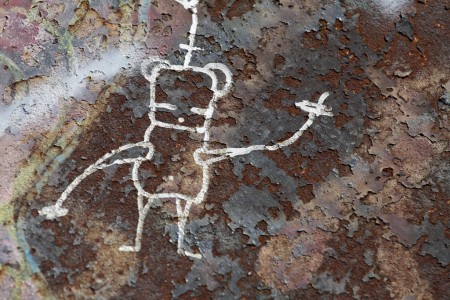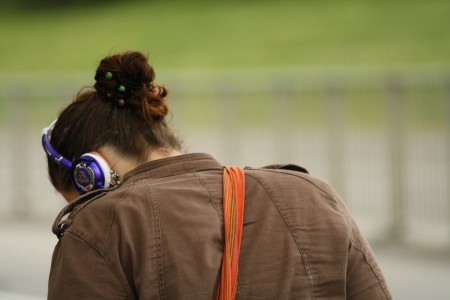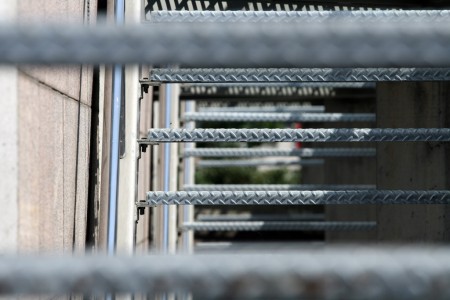Less famous than the Central Intelligence Agency (CIA), the American National Security Agency (NSA) is actually a far larger organization. It also provides the majority of the intelligence material provided to the president daily. Matthew Aid’s The Secret Sentry: The Untold History of the National Security Agency tracks the history of the organization between the end of the Second World War and the recent past. While the book contains a fair bit of interesting information, it suffers from some significant flaws. Notably, it is very thin on technical detail, not written with a neutral point of view, and not always effective at putting the role of intelligence in context.
Aid’s book contains virtually no technical information on the main work of the NSA: codebreaking and traffic analysis. Confusingly, it doesn’t even clearly indicate that a properly implemented one-time-pad (OTP) is actually an entirely secure method of communication, if not a very convenient one. For those hoping to gain insight into the past or present capabilities of the NSA, this book is not helpful. It does provide some historical background on when the US was and was not able to read codes employed by various governments, but does not explore the reasons why that is. Is certainly doesn’t consider the kind of non-mathematical operations that often play a crucial role in overcoming enemy cryptography: whether that is exploiting mistakes in implementation, or ‘black bag’ operations where equipment and materials are stolen. On all these matters, David Khan’s book is a far superior resource. Personally, there is nothing I would rather know about the NSA than how successfully they can break public key encryption systems of the kind used in web browsers and commercial encryption software.
The Secret Sentry consists largely of brief biographies of NSA directors interspersed among accounts of the numerous conflicts with which the NSA has been involved. The most extensively described of these are the Vietnam War and the ongoing conflicts in Afghanistan and Iraq. The information on the Gulf of Tonkin incident is quite interesting, given the ways in which it shows how intelligence can be misused by politicians spoiling for a fight (as obviously happened again with Iraq in 2003). Indeed, some of the best information in the book concerns how intelligence can be both badly and poorly used. For example, it discusses how keeping sources and methods secret makes intelligence less credible in the eyes of those making choices partly based upon it. At the same time, having sources and methods revealed reduces the likelihood that current intelligence techniques will continue to work. On the politics surrounding intelligence, it was also interesting to read about how the NSA was involved in bugging UN officials and representatives during the lead-up to the 2003 invasion of Iraq. The book is also strong when it comes to providing examples of policy-makers ignoring intelligence advice that conflicts with what they want to believe – as well as explanations of why there was no prior warning before major events like the fall of the Soviet Union, the Yom Kippur War, or September 11th, 2001. Rather, it describes how the various bits of information that would have gone into such warnings were not pieced together and properly understood in time.
The book contains a number of errors and unclear statements that I was able to identify. In addition to the aforementioned matter of the cryptosecurity of the OTP, I think it is wrong to say that the 1983 marine barracks bombing in Lebanon was the world’s largest non-nuclear explosion. The Minor Scale and Misty Picture tests were larger – as was the Halifax Explosion. The term JDAM refers to a guidance kit that can be attached to regular bombs, not a kind of bunker buster. Also, GPS receivers determine their locations by measuring the amount of time signals from satellites take to reach them – they are not devices that automatically broadcast their own location in a way that can be triangulated by others. These errors make me fairly confident that the book contains others that I was not able to identify.
The book also has a somewhat perplexing structure. Roughly chronological, it is written in the form of little vignettes with headings. An example of the way this can seem disjointed is found in the chapter on the Reagan and Bush Senior administrations. One one page, it describes the tenure of William Odon as NSA director. It then jumps into short description of America’s signals intelligence (SIGINT) satellite technology at the time. Then, before the page is done, it jumps to the topic of Ronald Pelton selling NSA secrets to the Soviets. One sometimes gets the sense that the order of these chapter sub-units was jostled after they were written. Terms and abbreviations are sometimes explained well after their first use, and sometimes not at all. Bewilderingly, the Walker-Witworth spy ring is mentioned only in passing, in a single sentence, and yet is included in the index.
The Secret Sentry shows a lack of objectivity that becomes more acute as it progresses, culminating in tirades against the 2003 invasion of Iraq and the NSAs controversial domestic wiretap program. While there are certainly grounds for criticizing both, it is arguably the role of a historian to provide facts and analysis, rather than moral or legal judgments. It is also a bit odd to see the attack of one American armoured vehicle as ‘tragic’ while the destruction of large Iraqi military formations is discussed only in factual terms. It would also have been welcome for the book to include more information on how those outside the United States have perceived the NSA, and the SIGINT capabilities of states not allied with the US.
Perhaps a second edition will eventually correct some of this book’s flaws. That would be welcome, since the topic is an important one. While the record of the NSA at providing useful intelligence is checkered, it is almost certainly the most capable SIGINT organization in the world today. Its future actions will have implications for both the privacy of individuals and for geopolitics and future conflicts.










